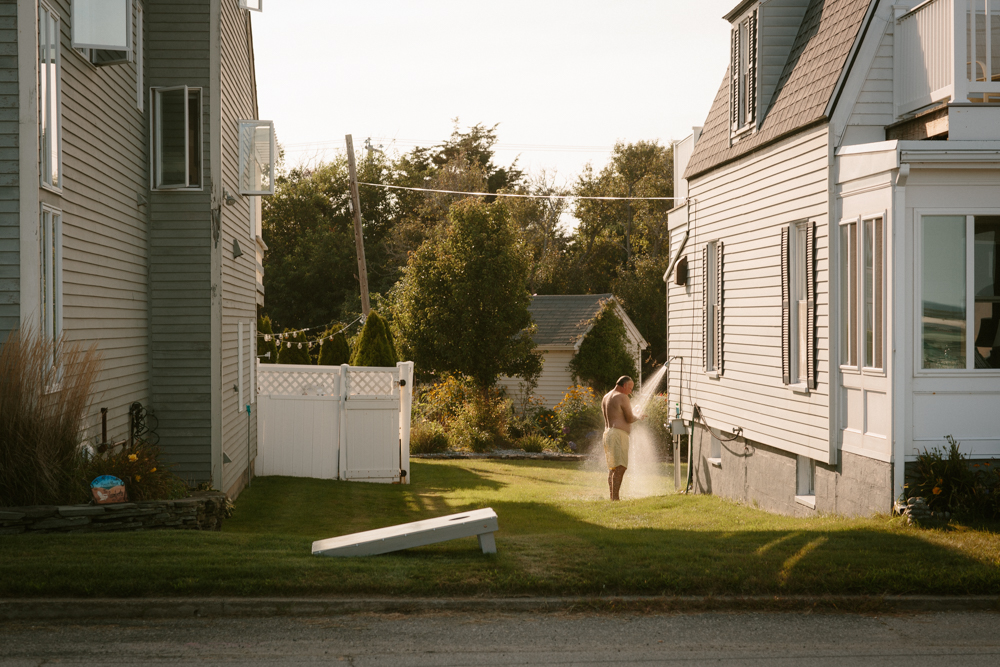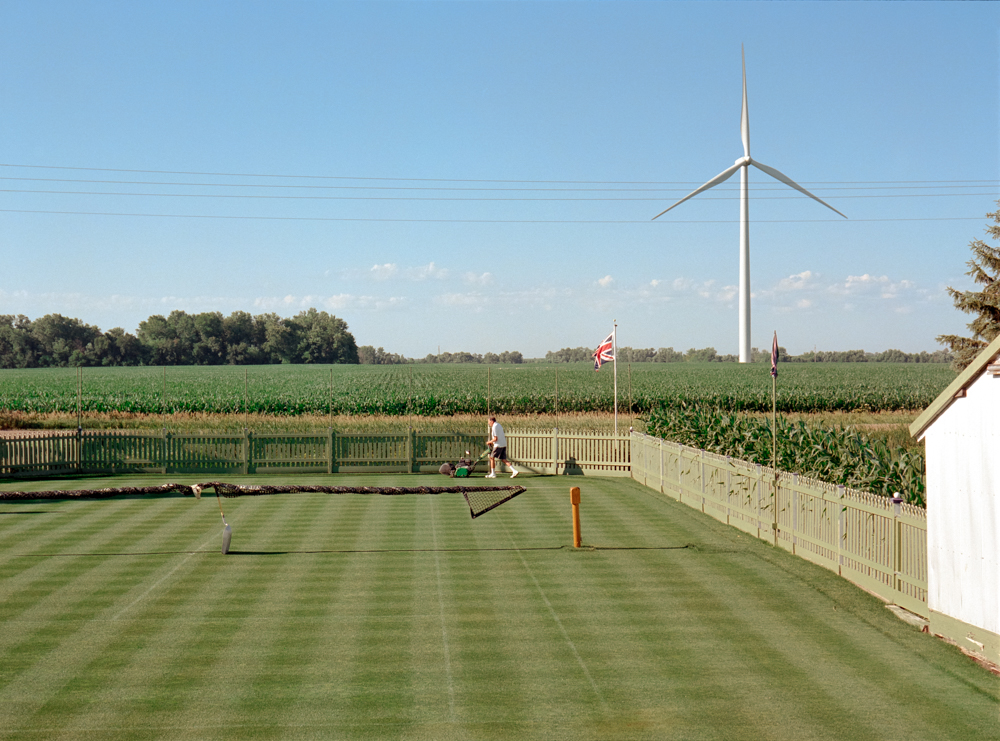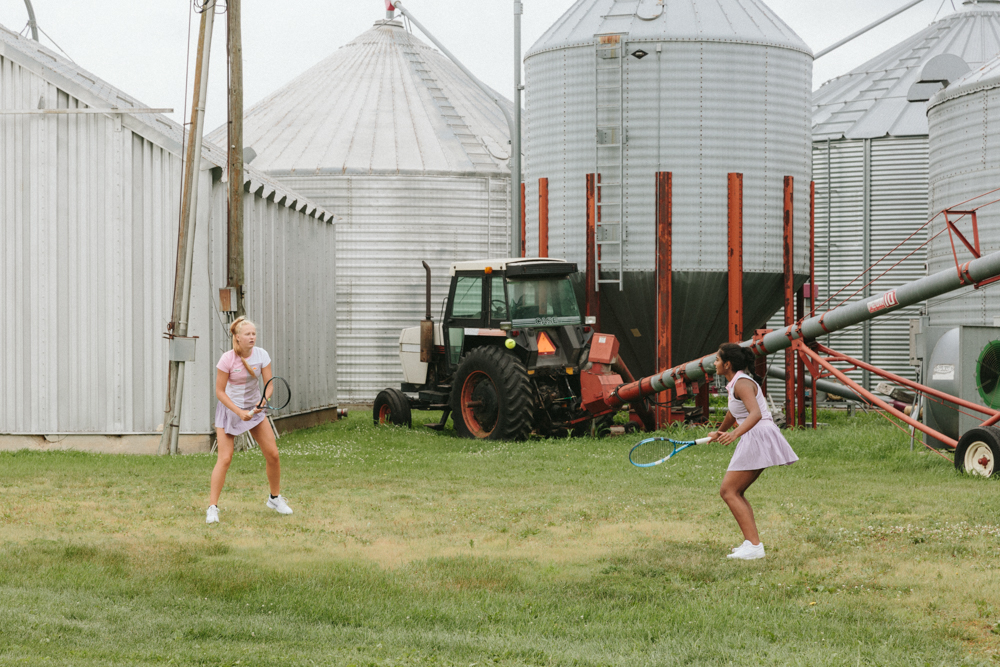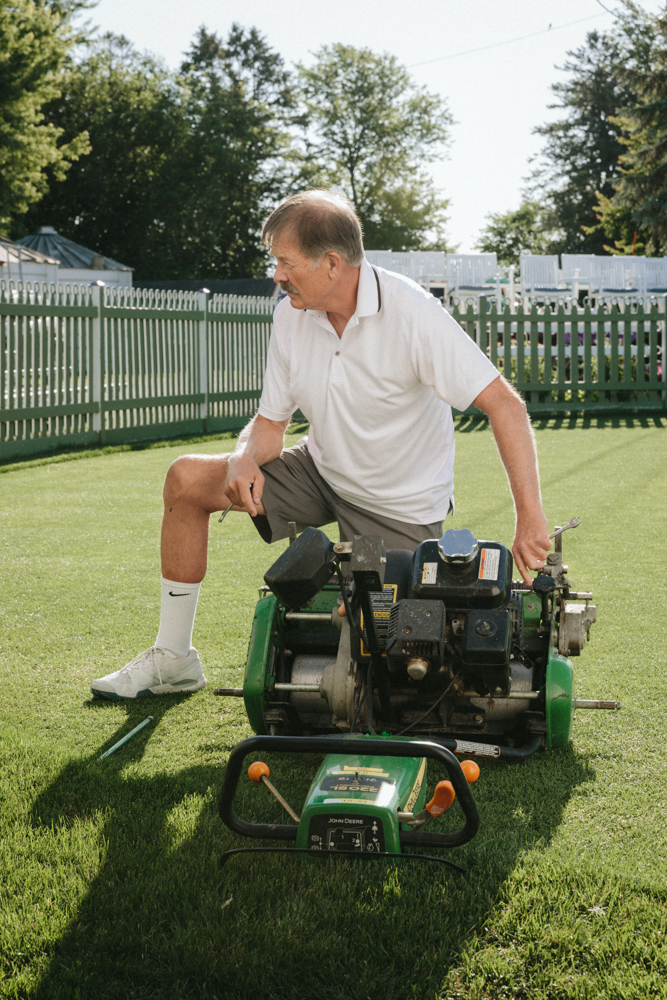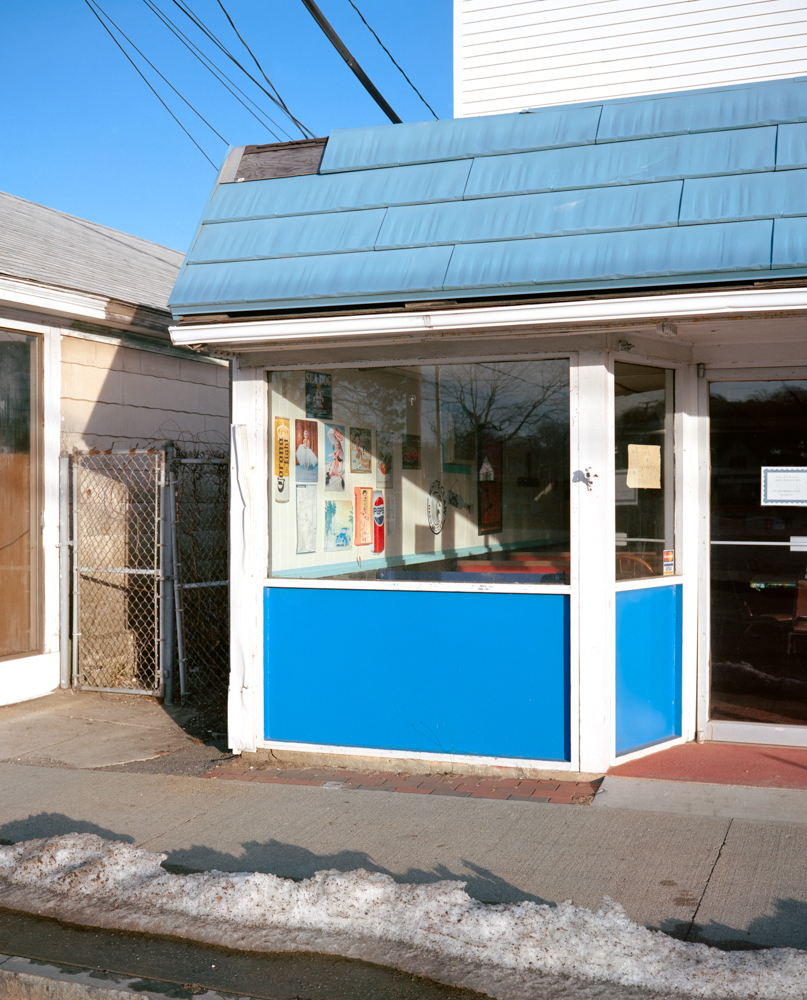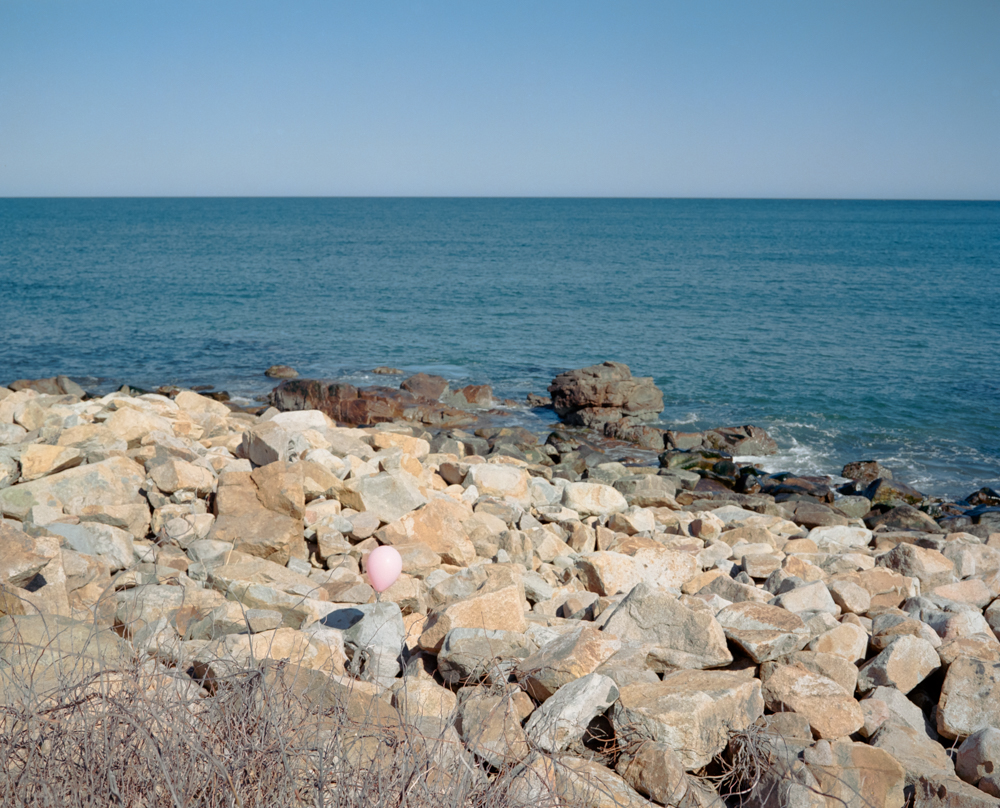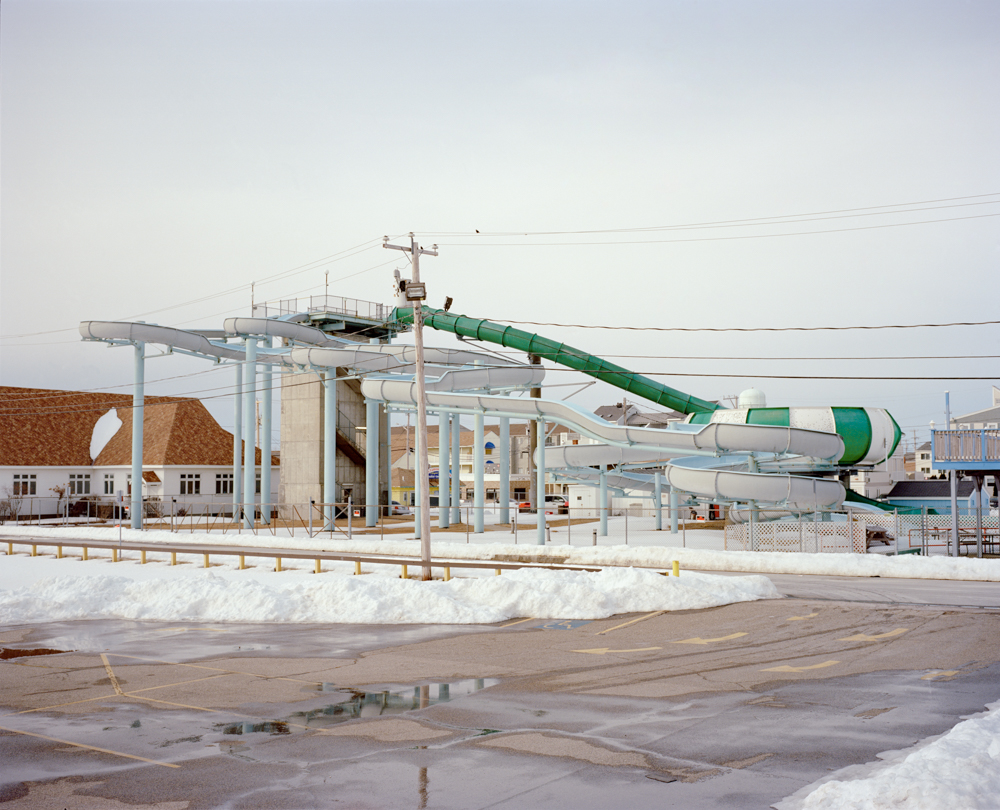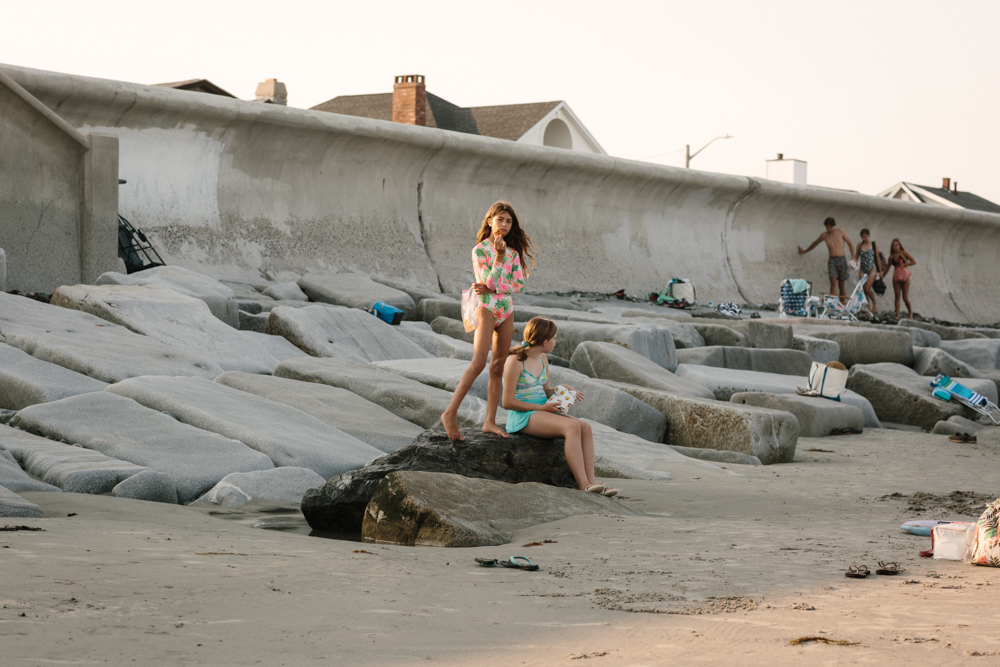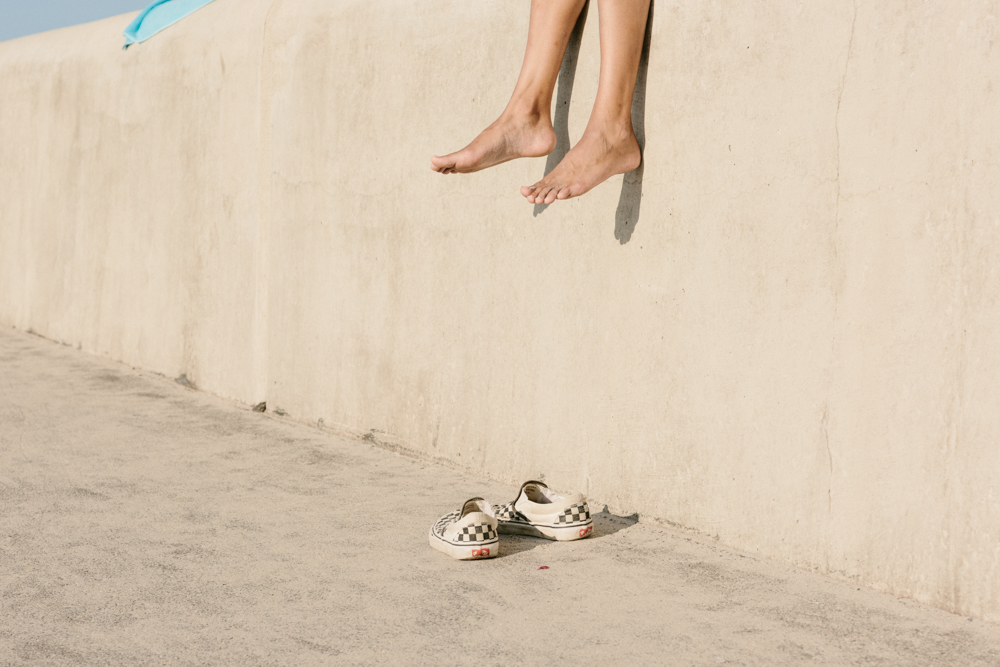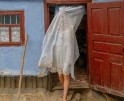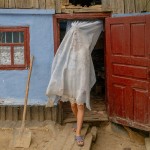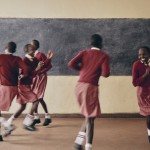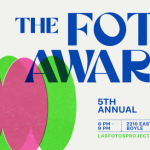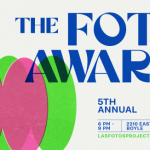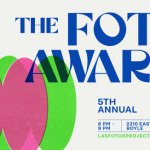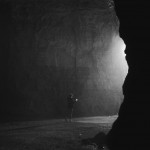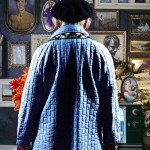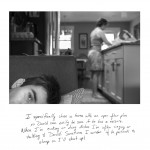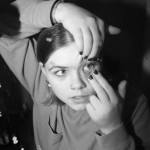Photographers on Photographers: Barry Schwartz in Conversation with Rachael Wright
Rachael Wright (b. 1981) is a portrait and documentary photographer based in Oakland, California.
Originally from Northampton, England, her work is shaped by the unique perspective gained from her travels and experiences living abroad, underpinned by innate curiosity and a deep sense of empathy. With an intuitive, photojournalistic approach to both personal and commissioned projects, Rachael seeks to reveal the beauty and complexity of the human experience, while exploring the universalities and idiosyncrasies connecting us all.
Her work has been recognized by the British Journal of Photography’s Portrait of Humanity (2022), the Julia Margaret Cameron Award (2022) and American Photography (2021, 2020, 2019). Commercial commissions include projects for Marc Jacobs, Converse and A24 Films, and she has been published by The Times of London, The Guardian, The Sunday Times Magazine and The New York Times. In 2020, Rachael was featured in the critically acclaimed six-part PBS/Sky Arts documentary television series, ICON: Music Through The Lens.
DANDELIONS
In the wake of the sudden death of a close friend in 2002, Mark Kuhn tore up the cattle feedlot on his Iowa farm and, with the help of his two sons, spent 18 months constructing a perfectly manicured grass tennis court in its place.
It was a dream the third generation farmer had held since discovering Wimbledon – a tennis tournament held 4,000 miles away in London, England – on hearing it broadcast on his grandfather’s shortwave radio when he was 10 years old.
The court soon became a community hub, with people traveling from all over the world to Charles City, Iowa, to play at the ‘All Iowa Lawn Tennis Club’ – named after Wimbledon’s home, the All England Lawn Tennis Club.
Having repeatedly written letters to Wimbledon’s head groundsman, a then 61- year-old Mark went to London for an internship at the All England Club in 2012. He finally got to see Centre Court for himself and diligently set about learning the very precise methods used on its hallowed turf. The same methods he uses with monastic dedication on his own court today.
In 2016, Mark was invited back to Wimbledon to serve as a Court Attendant. It was the honour of his life, and he returned to the farm overjoyed from another stint at his spiritual home. Two days later, his youngest son, Alex, took his own life.
Dandelions is a paean to a unique man, the realization of his far-fetched dream… and the love and loss of his boy.
PLUTO TRANSITS
A meditation on death, grief and transformation, made in the coastal New England states of New Hampshire, Maine and Massachusetts over the course of winter 2021.
The project was initially conceived in late 2018, during an off-season visit to the seaside town of York Beach, Maine. It was the middle of a chapter of life punctuated with cancer, suicide, ill-health and loss. The dissonance of bold colours on boarded-up beachfront facades set against the gray skies and frigid air, with a hostile Atlantic Ocean churning nearby, deeply resonated with me. A temporary move from season-less California to the Nor’easters of seacoast New Hampshire at the height of the COVID-19 pandemic gave me the opportunity to delve into and express this internal emotional landscape visually.
Though predominantly shaped by the absence of people, the series includes a traditional approach to portraiture (‘Samantha’ – whose grief was palpable as she spoke of the recent loss of her ‘soulmate and sweetheart’, Tom), as well as a more abstract interpretation (‘Rhonda’ – a pink balloon marking the spot where a 35-year-old mother-of-three was violently murdered at the place she loved most by her partner in broad daylight).
Each winter breath is a ghost
Of our recent selves:
We can learn to die easily,
No resistance, just
A gentle shrug into everything.
No one mourns their breath in winter.
Though you watch the essence of you
Escaping. Winter has its reasons.
– Greg Gilbert, Seeing Winter as Death and Finding Solace
THE WALL
Made during the dog days of summer on the edge of New England, The Wall explores the relationship between a 11⁄2 mile sea wall and the community who call it theirs.
In contrast to the wealthy enclaves nearby, with their private beaches, exclusive rules and parking permits, The Wall is a democratic place. A silent witness to the ebb and flow of humanity and nature, and the myriad ways both interact with it.
~~~~
Barry Schwartz: You’ve got editorial and commercial work on your site, and they’re all mixed together.
Rachael Wright: I want everything to look cohesive, like it all comes from me. The personal work isn’t separate, either. This is my eye, and this is what I do. I redid it recently, I divided it into selected work and archived work. The selected work, these are my favorite projects, and this is what I want more of. The archive stuff is: I’ve also done this. I’ve done a lot of celebrity work and work for musicians; it’s to show I’ve worked with these people and I can be trusted.
You were a publicist…
Many years ago. In the music business. In my 20s.
Were you taking photos then?
No, I was hiring people to take photos
Were you going along on the shoots?
I went on a few shoots. I did a lot of events, I did festivals and would always look after the photographers there.
How did you end up as a photographer?
I worked for a record label and a top promoter, and I’d started writing and interviewing bands for a music magazine in the UK. I went to New York for the first time and I was like, this is where I want to be. I’m going to move here. The music magazine that I interviewed for when I was in London asked me to interview a band in New York. I had just bought a camera, it was just a crappy Canon Rebel or something. I said, I’ll do the interview if I can do the photo shoot as well. I think about that now and what the fuck was I thinking? Luckily, this band knew what they were doing. I didn’t know at the time, but they were doing half my job. I look at the original pictures and I can see that I had the thing that you need to have that you then build upon. But the band liked the pictures and they asked me to go on tour with them. And that was kind of it.
Because I’d been a publicist, I knew how magazines worked and who the right people to contact were. I’d also worked at a magazine as a writer, interviewing celebrities and writing features and that kind of thing. So I learned lots of different facets of the industry and therefore have empathy. I’m like a magpie, I like to collect. And I now I collect pictures of things, I see a moment or some light, and I’m like, I want that. I’m like being a butterfly catcher.
You talked in another interview about photographing David Crosby, and you had 30 seconds or something along those lines.
I got what I needed from him, but I let him have it on his terms a little bit more than I would have with somebody else. It’s not because I was starstruck; it’s deference, not reverence. I have a lot of respect for these people. I remember at the end of the shoot, I wanted to do a few more, because photographers, we’re always trying for more, but I knew I had it. I was about to open my mouth to ask him to do something new. He just looked at me, like: We’re done. He wanted to go and get dinner. You’ve got soundcheck and then dinner, and I was the barrier to his dinner. So, okay, we’re done.
I remember going to a shoot with K.D. Lang. I went to her apartment, just me and her. I straight up asked her: What do you not like, and qualified it by saying because I’ve heard about photographers that have a concept in their mind, and I’m much more of a person that will come to another person’s space, figure out who they are from the clues in their space as if it is your picture too. K.D. Lang has been doing it for years. She knows what she’s doing. She’s seen enough photographs of herself to know what she likes and what she doesn’t like. She said, Oh, I hate that, I’m so glad you said that. We ended up having a really nice shoot.
I read that she was a Buddhist. And I noticed she had a little room set up as a temple. I went to step backwards and realized I was about to step into this room, and I had my shoes on. I immediately stopped and said, Do you want me to take my shoes off if I go in there and shoot? She looked at me like I was the most considerate person on earth. She opened up to me more as well, because I was considerate of her space. It’s those little things…you can learn them to a degree, but it’s about learning to be a person rather than a photographer. My main takeaway from a shoot is to feel like I was a good person and a good photographer, and if you get both, brilliant.
I want to have a nice time, I want to enjoy what I’m doing. I want them to have a nice time.
Tell me about your Pluto Transits project.
It’s a project about death I did in New England when I lived there during Covid. I was kind of feeling burned out, not knowing what I wanted to do anymore, but I wanted to do a personal project. Magnum released this educational series with different photographers, and one of them was Alec Soth. I just love his vibe.
I’d already started the Pluto Transits project. York, Maine in the summer is popping. It has the Fun-O-Rama. But everything was shuttered, everything was freezing cold, there was nobody around. I love the aesthetics of offseason seaside towns when they’re waiting for the life to come back. It’s quite gray, with the juxtaposition of the happy colorful arcade signs against the churning grey sea and all the sand and the flotsam and jetsam from a nor’easter. I wanted to go out and explore where I am. I’m living in this weird place where I never thought I would be living. It came at a time when we were in the depths of Covid. I was dealing with the grief of a couple of people that I had lost, right before Covid. Death just seemed to be everywhere. I had started therapy six months before that, so I was kind of interrogating my own inner landscape. I found that all around me, the world was showing me my internal landscape using external things.
I’ve always taken pictures of other people and other people’s stories, and never really thought about what that says about me or what I’m feeling or thinking. So it was an exercise, really, just to see what I came back with. I was also in a group with Brian Finke, doing an online class where we’d have Zoom meetings every weekend. I was trying to keep the wheels turning and stay sharp and make pictures. We had this group that met every Monday where we’d show each other the work, so it forced me to go out and make work, and then it forced me to also talk about the work, which I’d never done before. I’m not a winter person but I’d go out every day in January in New England, freezing weather. I would look for the things that expressed what I was feeling inside. Somebody else very important to me died during the project.
I stumbled across a murder scene in York Beach, a woman was murdered on the beach on a day that I was going to go there, by her partner. I went back there a couple of days later and made a picture of a pink balloon on some rocks with the ocean in the background. And then I saw a house that had burned down and a woman had died in that house. I was just exploring grief and death and looking it in the eye, if that makes sense, instead of turning away from it or trying not to feel it. I told my therapist about this she helped me really interrogate later on. It is helpful having a person sit and ask me questions. I have to form sentences and tell her about it and talk.
Being intentional in that way.
I didn’t want it to be about death, I wanted it to be about ‘there is always hope’, I wanted hope. There was always this element of hope that I wanted the project to ultimately get to.
In Alec Soth’s class he talks about sequencing a lot. That project was so personal and I remember saying in the group that I would meet with every Monday, I don’t care if nobody actually sees these pictures ever, because I’m working through something, these are for me. In the sequencing, there’s three stages to it. The first one is death and everything falling apart. Second stage is standing in the rubble and surveying: Okay, this is the new reality. The third stage of the sequencing is running towards two pictures, where one is looking behind at some footprints in the sand, and the next picture is completely white, virgin snow, and an empty drive-in theater screen. That feels like that’s the past then moving into the future. It doesn’t really look like a lot of my other work. I’m just going to put it out there. It’s something I love. It’s very personal to me.
But that led to being able to go to Iowa, and talk about the hard things with Mark and try to articulate that in pictures.
This is the project in the New York Times, “Tending to Grass, and to Grief, on a Tennis Court in Iowa, that you call “Dandelions” on your site. I would guess one of the reasons you were able to connect with Mark was because he recognized you were sympathetic, empathetic, that you’re not one of those journalists that want to feed off tragedy.
Yeah, exploiting that. Some photography projects you have to be really careful not to exploit people.
April 2022, Covid’s over, I can go to Iowa if Mark will allow me, so I wrote him a letter. I’d love to come take pictures of you sometime, I think was three pages long. Just telling him what his story meant to me.
I talked about Alex constantly while I was there, because I could tell that he loves talking about him. How you keep people alive is to talk about them. I wanted Alex’s presence to be a part — I didn’t know how I was going to do it during the project, because how do you have the presence of somebody who isn’t here anymore? But he’s in every blade of grass. There’s a picture of a butterfly on some mud — there’s lots of tennis shoe prints, and there’s a blue butterfly in the middle of it. To Alex’s mother, butterflies are a sign that Alex is around.
I would love to be able to give you perfect sentences about what it means to me, but I actually felt healed afterwards. And I felt a healing about my my friend who I lost to suicide. I had this weird anger towards him that came out of nowhere. I couldn’t look at a picture of him. If he came to mind, I felt really angry with him. That all dissipated on that trip.
It was really meaningful that it was a project that I did on under my own steam. It was something that was mine. And it was from a part of me that I don’t show easily or often. I love getting to share that with people, and share Mark with people. I have a call with him tomorrow to catch up. We’re going to go to Wimbledon and see it together. He’s my Wimbledon soulmate, we’re going to meet at Wimbledon.
You’ve been in some exhibitions.
This first one was through a band I was working with. Secret 7” is an Amnesty International charity, the money goes to them. It was one song on a seven inch vinyl. The artwork is by a photographer, donating a picture, with the artwork to be exhibited. Buyers don’t know who the band is, what the song is. They pick which one they want to buy.
Live Energy was a group exhibition of live music photography. That was for charity as well. I donated a picture, sold at auction. That was through my editor at Q magazine, who works with books and exhibitions and knows every music photographer going. He approached me to be a part of that.
Work In Progress was the one that I think of most, at Root Studios in New York. My show within the show was called Access All Areas, which the tour section on my website is now called; it was all backstage photos. I like backstage stuff, stuff nobody gets to see. I don’t like exploiting — to me backstage is private, right? So I asked all the musicians if it was okay to exhibit the photographs.
The 100 Club in London, is a storied punk club from back in the day, really famous for its red walls and its black and white photography hanging on all of the walls. There’s pictures of Johnny Rotten, and every rock star you can think of. They have three of my pictures in their permanent collection.
You won a Julia Cameron Award and Portrait of Humanity.
This Portrait of Humanity is in a book. I was really pleased to be a part of that.
What’s your portrait?
I have two pictures in that one. One of them is the the lady from my Pluto Transits project, the lady with the red scarf.
There is also a grandfather and a grandson I saw fishing on Santa Monica Pier. I just watched them until the sun went down, and they had no idea I was watching until until the end. They looked up and saw that I’d been taking a few pictures but I was mostly just watching this little boy that didn’t know that this man wasn’t going to be around forever; again, death.
I was thinking about when I went fishing with my granddad and how I didn’t know that he wouldn’t be around much longer. I think when I take pictures, I’m trying to hold on to something that’s un-hold-on-able-to.
We were talking earlier, and I was trying to remember that quote, I think it’s Beckett, which is “only connect”.
Yeah, that’s true. I think that’s, that’s what everybody is looking for, whether they know it or not. I’m constantly just looking for connection. Like, I went to a farm in Iowa to spend a week with a 72 year old man. We’re completely different. But what is it about us that’s the same? And I do that with 17 year old Billie Eilish. There’s an artist called Brittany Howard. She was in a band called Alabama Shakes. She’s a Black woman from the Deep South, and I’m a White woman from the middle of England. She’s had a completely different life to me. But I need to go in there and find common ground to connect as humans. I read on her Wikipedia that she grew up on a in a junkyard. My granddad, my grandma, had a farm, and the second place they lived was basically a junkyard. So we were both junkyard kids. We sat talking about being junkyard kids, and how you’d like poke around in like, death traps. It was finding that we’ve had completely different lives and yet, there’s this one weird detail about us that makes us who we are. I’m constantly looking for that detail in anybody I meet.
Annie Leibovitz has a famous shot of Jack Nicholson in his bathrobe on his lawn, holding a golf club. That wasn’t part of the plan. He was practicing while the crew was setting up inside and she looked over, and the picture was just there.
That’s where the magic is. I try not to go in with too many expectations. I like to have a plan, but I think it’s important to be open.
The Iowa project ended up being completely different to how I wanted it to be. I drove all the way there, and the whole way I was telling myself I need to let go of what I want this to be, because it’s not going to be that, it’s going to be what it’s going to be; just how it ended up being.
~~~~
Rachael Wright: https://rachaelwright.com
Instagram: @rachaelwrightphoto
Barry Schwartz is a photographer, writer, and educator.
Website: https://barryschwartzphoto.com
Blog: https://barryschwartznotbarryschwartz.com
Instagram: @barryschwartz1
Posts on Lenscratch may not be reproduced without the permission of the Lenscratch staff and the photographer.
Recommended
-
The International Women in Photo Association Awards: Lorraine Turci: The Resilience of the CrowMarch 16th, 2024
-
The International Women in Photo Awards: Natalia Garbu: Moldova LookbookMarch 15th, 2024
-
The International Women in Photo Association Awards: Rayito Flores Pelcastre: Chirping of CricketsMarch 14th, 2024
-
The International Women in Photo Association Awards: Alena Grom: Stolen SpringMarch 13th, 2024
-
The International Women in Photo Association Awards: Louise Amelie: What Does Migration Mean for those who Stay BehindMarch 12th, 2024

